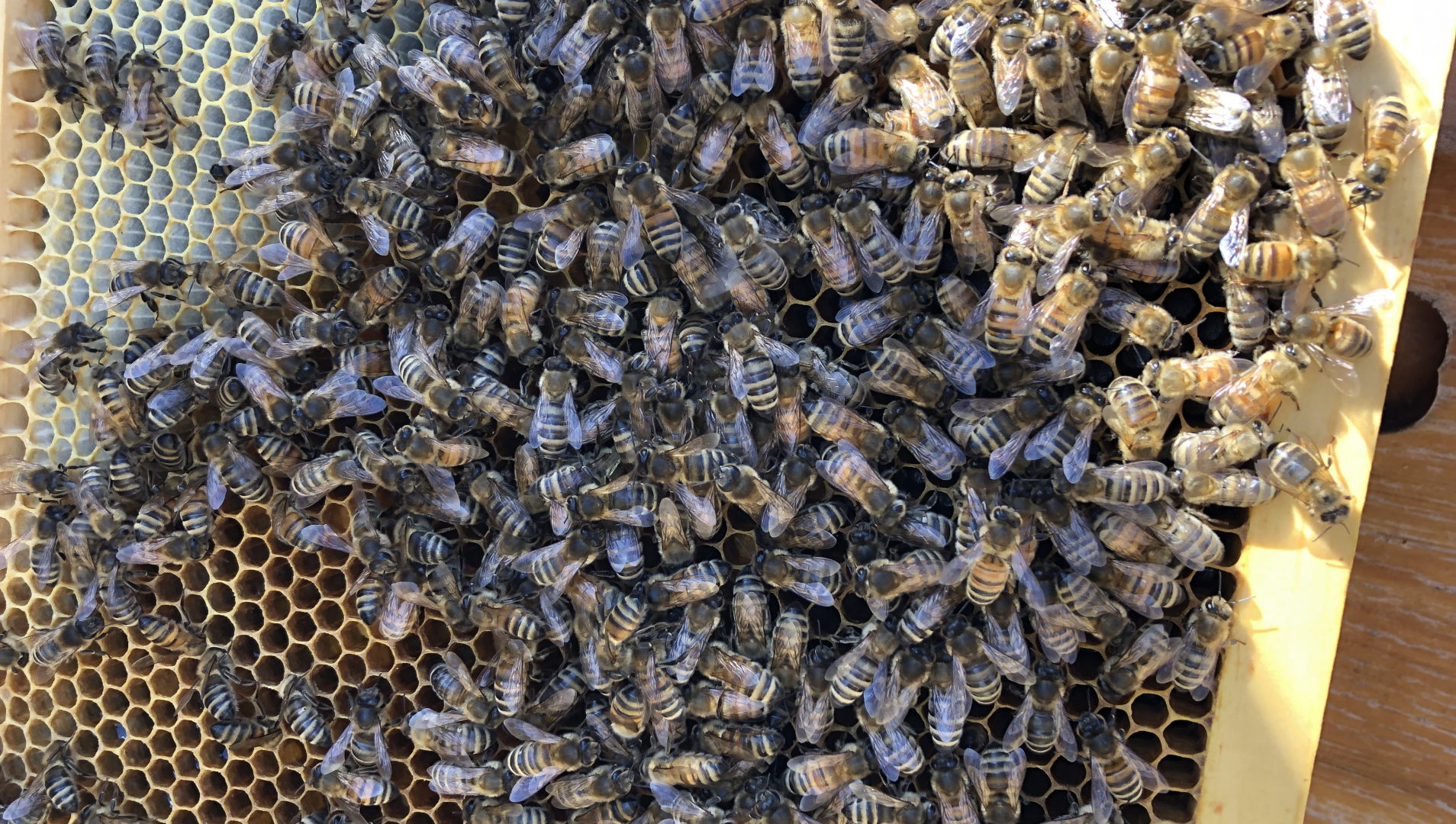Assiniboine students design sensor system to help beekeepers save their queens
May 23, 2019
The queen bee is a vital part of any hive; without her, the colony won’t survive.
If worker bees and drones can’t find their queen, they will fan their wings to move air around the hive, hoping to find her scent. In the process, they create more noise than a hive that has its queen.
That’s just one of the signals for bees and beekeepers that Assiniboine students Adam Lennox and Kent Collins are trying to capture with their Bee Aware project.

Bee Aware was the capstone project for the pair as they recently completed their second year of Communications Engineering Technology at Assiniboine Community College.
Lennox and Collins have designed a wireless sensor network to be installed inside bee hives, providing instant feedback to beekeepers.
The students are collaborating with 4K Honey, a producer located about 80 kilometres southeast of Brandon. Collins knows two of the owners, inspiring him to try to help them out.
The network’s features and functions were designed after several meetings with 4K to determine what information from the hives would be beneficial.
Bees don’t hibernate, but must stay inside the hive during winter to keep warm enough to survive.
“I know last year, they had cows knock over some of their hives. It was the end of the year. It was cold out, so they all died. Basically, the bees would leave the cluster, make it about 10 feet and die. If the beekeepers could have got there earlier, maybe they could have saved them,” Collins said.
One of the sensors used is an accelerometer that can detect movement in any direction as well as any vibrations.
If everything in the hive is humming along routinely, the sensors report the status of the hives to the beekeepers twice a day.
If the data collected indicates the possibility of an urgent event, then a notification is sent to the beekeeper immediately. These events could be the death of a queen bee, a cow knocking over a hive or someone trying to steal the hive.
Theft of hives can be a costly problem for beekeepers. The Regina Leader-Post last week reported that a theft of 150 bee hives cost a beekeeper in Saskatchewan $60,000 in lost honey production and replacement costs.
Another sensor uses a laser beam to be able to tell when bees are leaving the hive and when they return.
“At different times of the season, the bees will get different flowers. They’ll take clover, then they’ll take canola, then they’ll take buckwheat. They’ll leave the hive at different times,” Collins said.
“What I want to do is log the times when they leave and the times when they come back. How long is their day? Does it get shorter with the sunlight? Do they care about sunlight? Or do they just do it until they’re done?” he asked.
Collecting this information will allow the beekeepers to apply data analytics to improve operations and increase yields and profits.
Collins is designing the sensors, while Lennox is designing the network that will deliver the sensor information to the beekeepers by email or text on their computers or smartphones.
The sensors in the hives send data to a microcontroller unit that will collect the information from up to four hives. These units will then transfer data to a collector device in each yard, using Bluetooth technology for short distance communications. With this system, there could be up to 10 hives per yard, Lennox said.
The collector device in each yard then sends the data to a central gateway, which could be up to 10 kilometres away, using long-distance wireless protocol on a low-power wide area network.
“When the data is sent to the gateway, it is processed and sent via cell towers to a cloud-based server. Data and notifications are then forwarded to the beekeeper by email or text message. It could also be uploaded to a web page, where they could view that data at any time as well,” Lennox said.
The system uses solar panels to recharge batteries, saving farmers from having to replace batteries several times a month. This also allows for installation in hives in remote areas that do not have electrical service installed.
Collins and Lennox estimate they can deliver the system to 4K Honey for less than $1,000 in capital costs and with low ongoing operating costs. Keeping an eye on the hives remotely would free up the beekeepers to perform other tasks.
Jordan Kulbacki, one of the owners of 4K Honey, said the sensors would give the beekeepers the ability to quickly identify any issues and make plans to deal with them.
“Typically, we only visit a yard every one to two weeks. These devices would give us a way to monitor our hives 24 hours a day, seven days a week. If a hive is having issues, we can find out sooner and do what we can to correct it or save the hive, which saves us both time and money,” Kulbacki said.



